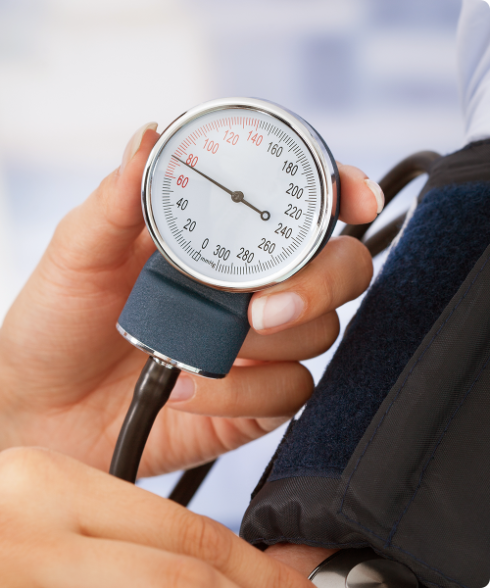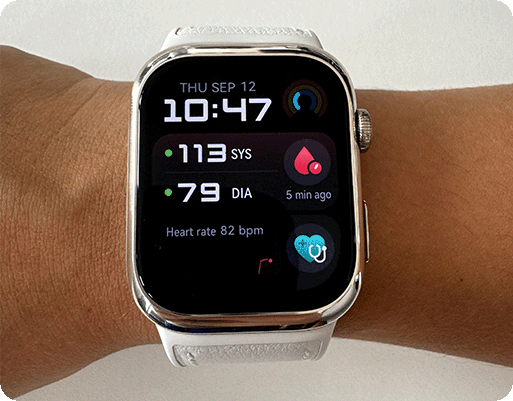Mobile Health Technology:
A Game Changer for Cardiovascular Health Management?

Reading duration: Approximately 8 minutes

Dr Ben Buckley
Dr Ben Buckley is a Senior Lecturer in Cardiovascular Physiology within the Liverpool Centre for Cardiovascular Science and a Fellow of the ESC (European Society of Cardiology). His research interests are in Preventive Cardiology, with a special interest in the prevention and management of cardiovascular disease. This includes cardiovascular epidemiology and use of mobile health technology to improve the management of cardiovascular health. He has won the prestigious ESC Young Investigator award for his research in Preventive Cardiology.

Professor Gregory Lip
Professor Gregory Lip is Price-Evans Chair of Cardiovascular Medicine, at the University of Liverpool, UK – and Director of the Liverpool Centre for Cardiovascular Science at the University of Liverpool and Liverpool Heart & Chest Hospital. He is also Distinguished Professor at Aalborg University, Denmark; and Adjunct Professor at Seoul National University and Yonsei University, Seoul, Korea. Half of his time is spent as a clinical cardiologist, including outpatient clinics (leading atrial fibrillation and hypertension specialist services) and acute cardiology.
In this article
The Importance of Cardiovascular Health
How the HUAWEI WATCH D and WATCH D2 Can Help
Practical Scenarios
Conclusion

The Importance of
Cardiovascular Health
Cardiovascular health involves the heart and blood vessels, crucial for maintaining the body's overall function. Blood pressure, the force of blood against artery walls, is a vital sign of cardiovascular health. High blood pressure (hypertension, ≥140/90 mmHg) can lead to serious health issues, including heart disease, stroke, and kidney failure. Regular blood pressure monitoring can help in early detection and better management of hypertension and its risks.
The Scale of the Problem
How widespread is high blood pressure? A glance at the statistics reveals that it’s a pervasive and serious health issue across the globe:
•United Kingdom: Nearly 1 in 3 adults suffers from high blood pressure, highlighting a major public health concern.
•Europe: Over 30% of adults are affected by hypertension, with cardiovascular diseases (CVDs) being the leading cause of nearly half of all deaths in Europe.
•Global: Approximately 1.13 billion people have hypertension, making it the leading cause of death and responsible for 31% of premature deaths.
•Two-thirds of individuals with hypertension live in low- and middle-income countries.
These statistics underscore the critical importance of innovative health technologies, such as the HUAWEI WATCH D and WATCH D2, in the early identification of early blood pressure abnormalities to improve health outcomes and reduce the global burden of these diseases.
How the HUAWEI WATCH D and WATCH D2 Can Help

HUAWEI WATCH D2
Ambulatory Blood Pressure Monitoring Precisely manage your health every moment
All-round Health Management
Light and Slim Design
Smart Living Experience Bluetooth calling, music playback and more
Medically Certified
Compatible with iOS and Android

Blood Pressure Monitoring
The HUAWEI WATCH D and WATCH D2 are equipped with advanced blood pressure monitoring capabilities. This watch uses a mini pump and pressure sensors to provide accurate, clinical-grade blood pressure readings. One of the standout features of the HUAWEI WATCH D2 is the 24-hour ambulatory blood pressure monitoring (ABPM), which allows for continuous measurement throughout the day and night, even during sleep or physical activity. This comprehensive monitoring captures a full 24-hour blood pressure profile, helping to identify patterns such as ‘Non-Dippers’—individuals whose blood pressure does not decrease significantly at night. Identifying these patterns helps medical professionals who, with access to such data, may take steps to tailor treatment strategies for better cardiovascular health management.
The ECG (Electrocardiogram) feature of the HUAWEI WATCH D and D2 allow users to monitor their heart's electrical activity. This is crucial for detecting irregularities such as atrial fibrillation (AF), a common heart rhythm disorder that increases the risk of stroke and heart failure.
•On-Demand ECG:
Capture ECG recordings whenever needed or wanted
•Data Storage for Healthcare Review:
These recordings can be stored and shared with healthcare professionals for further analysis and review.
Heart Rate Monitoring provides users with real-time data on their heart's performance. This feature helps in understanding how physical activities, stress, and other factors affect heart rate, contributing to a more comprehensive view of
cardiovascular health.
By tracking Sleep Patterns the HUAWEI WATCH D and WATCH D2 provide insights into sleep stages and quality. Quality sleep is essential for heart health. Poor sleep can negatively impact blood pressure and overall cardiovascular health, so this feature helps users identify and address sleep-related issues.
The watch also tracks Stress Levels through heart rate variability, offering users
insights into their stress patterns. High stress can contribute to elevated blood pressure and other cardiovascular problems, making stress management an important aspect of overall health.
Blood Oxygen Levels (SpO2) can be indicative of respiratory issues or other underlying health conditions, which can affect cardiovascular health. It can also be of interest, if travelling to altitude, to monitor how well your body is coping and reduce altitude sickness.
The HUAWEI WATCH D and D2’s Lifestyle Recommendations and Fitness Tracking can motivate users to adopt healthier habits. Regular physical activity is known to lower blood pressure and improve cardiovascular health.

Good to know
Dippers experience a significant drop in blood pressure at night, typically about 10% or more compared to daytime levels, which is a healthy response and linked to a lower risk of cardiovascular events. Non-dippers do not have this nocturnal drop, which can indicate a higher risk for heart disease.

Figure 1: I tested the GPS function of the watch in the mountains of Snowdonia and was impressed.

The integration of advanced health monitoring features, especially ABPM, in everyday wrist-worn devices like the HUAWEI WATCH D2 is revolutionising how we approach personal health and disease prevention.

Practical Scenarios
Early Detection and Prevention
Regular monitoring with the HUAWEI WATCH D and WATCH D2 can identify signs of
hypertension early, allowing for timely interventions that prevent
serious health complications, if data is passed on to a medical
professional. Detecting abnormalities in ECG readings or blood pressure trends enables proactive management of cardiovascular health. We found the watch to be highly accurate and easier than traditional blood pressure measurement methods to monitor patient blood pressure on the go (in real life settings) and allowing us to monitor blood pressure recovery following exercise.
Clinical relevance of blood pressure recovery
1.Normal blood pressure recovery: After exercise, blood pressure gradually returns to baseline levels. The speed and pattern of this
recovery are influenced by factors such as fitness level, age, and the presence of cardiovascular conditions.
2.Delayed blood pressure recovery: Slower recovery of blood pressure post-exercise has been associated with an increased risk of CVD. This
delayed response may indicate underlying autonomic dysfunction or arterial stiffness, both of which are risk factors for cardiovascular events.
3.Exaggerated post-exercise hypertension (PEH): While post-exercise hypertension is generally a positive response, an exaggerated decrease in blood pressure could be a concern, especially in individuals with cardiovascular disorders, as it may lead to dizziness or fainting.
CVD risk and blood pressure recovery
1.Predictive Value: The rate of blood pressure recovery post-exercise is a strong predictor of future cardiovascular events. Studies suggest that individuals with a slower recovery are at higher risk for hypertension, myocardial infarction, and stroke.
2.Exercise as a Therapeutic Modality: Regular exercise training can enhance PEH and improve blood pressure recovery, thus reducing overall CVD risk. It is particularly beneficial in hypertensive individuals, where the post-exercise reduction in blood pressure can be more pronounced and
sustained.
3.Autonomic Function: Impaired autonomic function, which is often reflected in abnormal blood pressure recovery, is linked to higher mortality in CVD patients. Monitoring blood pressure recovery can, therefore, be a useful tool for medical professionals in assessing cardiovascular health and
tailoring exercise prescriptions.
Enhanced Patient-Doctor Interaction
Data collected by the HUAWEI WATCH D and WATCH D2
can be shared with healthcare providers, facilitating better informed consultations and personalised treatment plans.
This data-driven approach supports more effective management of cardiovascular conditions. The watch allows for accurate blood pressure readings to be taken in real-life scenarios – this can improve understanding of blood pressure trends outside of the clinical environment.
Above all, the new feature of the WATCH D2, the 24-hour blood pressure measurement allows for more in-depth and personalised hypertension management and prevention. It would also allow for investigation of blood pressure ‘dippers’ and ‘non-dippers’.
Daily Health Management
The watch provides actionable insights, motivating users to adopt healthier lifestyles, such as increased physical activity and better dietary choices. By integrating health monitoring into daily life, users can make informed decisions about their health and well-being.

Figures. From left to right, testing the watch in our research labs compared to traditional automatic blood pressure monitors, and using it to test blood pressure recovery.

Conclusion
The HUAWEI WATCH D and D2 represent a significant advancement in personal health technology, that allows for easy blood pressure measurement at anytime, whether at the work place or during and following exercise. This allows for a more ‘real-world’ understanding of blood pressure trends - which can support medical professionals in identifying early risk of cardiovascular diseases and help activate personalised treatment plans. As cardiovascular diseases continue to pose a global challenge, mobile health technology is an emerging and powerful tool in the fight against this growing epidemic. Smart wearables can help individuals make proactive changes and manage their health more effectively, while allowing for more integrated cardiovascular health management opportunities. The HUAWEI WATCH D and WATCH D2 offer the convenience and comprehensive health insights needed to balance the demands of a busy lifestyle with the pursuit of better health.

Medical disclaimer:
The HUAWEI WATCH D, HUAWEI WATCH D2 and the ECG feature is intended to be used by people aged 18 years and over, but is not intended to replace any medical diagnosis or treatment. Data obtained during the use of this device and feature is for personal reference only. Before using the device, please carefully read the Quick Start Guide, Wearing Guide, and Instruction for Use.
Due to national restrictions on obtaining approval / registration as a medical device, the HUAWEI WATCH D and WATCH D2 will only be available in selected European markets, and the ECG feature only works on watches and smartphones purchased in countries where the service is available.
- Supported smartphones: Mobile phones with Android 6.0 or compatibles, HarmonyOS 2.0 or compatibles, or iOS 12.0 or compatibles. The Huawei Health app version on your mobile phone must be 11.0 or compatibles. Please make sure that your wearable device and phone are running the latest versions before using ECG.
Heart rate, SpO2, stress, and sleep quality are not medical device features. Monitoring data and results are for reference only and should not be used as a basis for medical diagnosis or treatment.
[References]
- 1. NCD Risk Factor Collaboration. (2017). Worldwide trends in blood pressure from 1975 to 2015: a pooled analysis of 1479 population-based measurement studies with 19·1 million participants. The Lancet, 389(10064), 37-55. https://doi.org/10.1016/S0140-6736(16)31919-5
- 2. European Society of Cardiology. (2019). 2019 ESC Guidelines for the management of arterial hypertension. European Heart Journal, 40(5), 321-362. https://doi.org/10.1093/eurheartj/ehy339
- 3. World Health Organization. (2020). Hypertension. https://www.who.int/news-room/fact-sheets/detail/hypertension
- 4. Global Burden of Disease Study. (2017). Global, regional, and national age-sex-specific mortality for 282 causes of death in 195 countries and territories, 1980-2017: a systematic analysis for the Global Burden of Disease Study 2017. The Lancet, 392(10159), 1736-1788. https://doi.org/10.1016/S0140-6736(18)32203-7
- 5. Shiroma EJ, Lee IM. Physical Activity and Cardiovascular Health. Circulation 2010;122:743-752. doi: 10.1161/CIRCULATIONAHA.109.914721
- 6. Bannell DJ, France-Ratcliffe M, Buckley BJR, Crozier A, Davies AP, Hesketh KL, Jones H, Cocks M, and Sprung VS. Adherence to unsupervised exercise in sedentary individuals: A randomised feasibility trial of two mobile health interventions. Digital Health. 2023. 20552076231183552.
- 7. Harrison SL, Buckley BJR, Zheng Y, Hill A, Hlaing T, Davies R, Guo Y, Lane DA, Lip GYH; Liverpool-Huawei Stroke Study Investigators. Evaluation of Huawei smart wearables for detection of atrial fibrillation in patients following ischemic stroke: The Liverpool-Huawei stroke study. Am Heart J. 2022. 257:103-110. doi: 10.1016/j.ahj.2022.12.004.
- 8. Leo DG, Buckley BJR, Chowdhury M, Harrison SL, Isanejad M, Lip GYH, Wright DJ, Lane DA; on behalf of the TAILOR investigators. Interactive remote patient monitoring devices for managing chronic health conditions: systematic review and meta-analysis. Journal of Medical Internet Research. 2022. doi:10.2196/35508.
- 9. Buckley BJR and Lip GYH. Comprehensive ‘Cardiovascular Health’ Rehabilitation: An integrated approach to improve prevention and rehabilitation of cardiovascular diseases. Thrombosis and Haemostasis. 2022. doi:10.1055/s-0042-1757403.
Administrator
Copy successful

